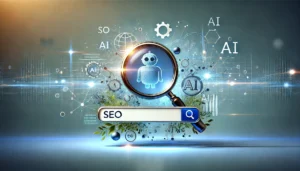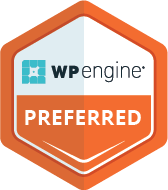
Website design and development encompass a wide range of technical terms and concepts. Whether this is brand new to you, or you are an experienced marketing professional, it’s crucial to have a solid understanding of these terms to effectively communicate and collaborate on your web projects. Many people in our field throw around industry lingo and confusing acronyms and we like everyone to understand exactly what we are talking about when working together on a web project – whether it be a design and development, or SEO related work.
In this article, we present a comprehensive glossary of terms related to website design and development, including detailed definitions and explanations. We hope this adds a little clarity to your understanding of web design, development and optimization. If we missed a term that you would like us to elaborate on, feel free to let us know.
- Design: Design involves creating the visual appearance and layout of a website. It encompasses elements such as color schemes, typography, imagery, and overall aesthetics. The design process aims to establish an engaging user interface that aligns with the brand’s identity and delivers a positive user experience.
- Wireframe: A wireframe is a basic visual representation of a webpage or interface. It outlines the structure and layout of content without incorporating detailed design elements. Wireframes assist designers and developers in planning the hierarchy and arrangement of elements, including navigation, text, images, and interactive components.
- Navigation Planning: Navigation planning focuses on designing the structure and organization of a website’s navigation system. It includes determining the placement and functionality of menus, links, buttons, and other elements that facilitate user movement between different pages or sections. Effective navigation planning ensures easy accessibility and a seamless user experience.
- Development: Website development involves building and implementing a website using programming languages, frameworks, and technologies. It encompasses tasks such as writing code, creating interactive features, integrating databases, and optimizing performance. Development is typically divided into front-end development (client-side) and back-end development (server-side).
- Front-end Development: Front-end development concentrates on the client-side of a website, where users directly interact. It involves writing HTML, CSS, and JavaScript code to create the user interface and implement the design. Front-end developers ensure that the website is visually appealing, responsive, and functional across various devices and browsers.
- Back-end Development: Back-end development deals with the server-side of a website, which handles data processing, storage, and retrieval. Back-end developers utilize programming languages such as Python, PHP, or Ruby, along with frameworks and libraries, to build server-side logic, manage databases, and handle server interactions. They enable dynamic functionality and facilitate data exchange between the server and client.
- Responsive Design: Responsive design is an approach that ensures a website adapts and displays correctly on different devices and screen sizes. With responsive design, the layout, images, and content adjust dynamically based on the user’s screen resolution. This provides a consistent and user-friendly experience across desktops, tablets, and smartphones.
- User Experience (UX): User experience encompasses the overall experience a user has while interacting with a website. It includes factors such as usability, accessibility, performance, and satisfaction. UX design aims to understand user behaviors, needs, and goals to create intuitive and engaging interfaces that enhance user satisfaction and achieve business objectives.
- User Interface (UI): User interface refers to the visual elements and interactive components of a website or application that users interact with. It includes buttons, menus, forms, icons, and other graphical elements. UI design aims to create a visually appealing and user-friendly interface that guides users through the website and facilitates their interactions.
- SEO Planning and Optimization: SEO (Search Engine Optimization) is the process of improving a website’s visibility in search engine results. SEO planning involves conducting keyword research, optimizing website content, and implementing various strategies to enhance search engine rankings. It is crucial to incorporate SEO planning early in the website development process to ensure the website is structured and designed with search engines in mind.
Let's Do This Together.
Join over 10,000 subscribers that receive our digital newsletter, full of actionable news and information you can apply to your business. Sign up today!
Sharing Is Caring.
Share this post with all of your contacts by using the social sharing links below.
Related Content.
To Go Fast, Go Alone. To Go Far, Go Together.
Are Your Ready To Take The Next Step? Drop us a line today for a free consultation.
Get In Touch
Apache Interactive
Kingwood Texas
832.971.4905
Connect@ApacheInteractive.com
We Love Referrals
Who We Are And What We Do
Apache Interactive is a digital marketing agency specializing in technical SEO, online advertising (PPC), content marketing, and web design and development services.
We work directly with client companies, and also partner with other marketing and branding agencies that want to have a digital marketing expert on call to assist with challenging projects.
Stay Connected
The Internet is a big place and we love to hang out on all of the major social networks.
Follow our accounts and never miss any of our photos, videos, or other digital marketing mayhem.





